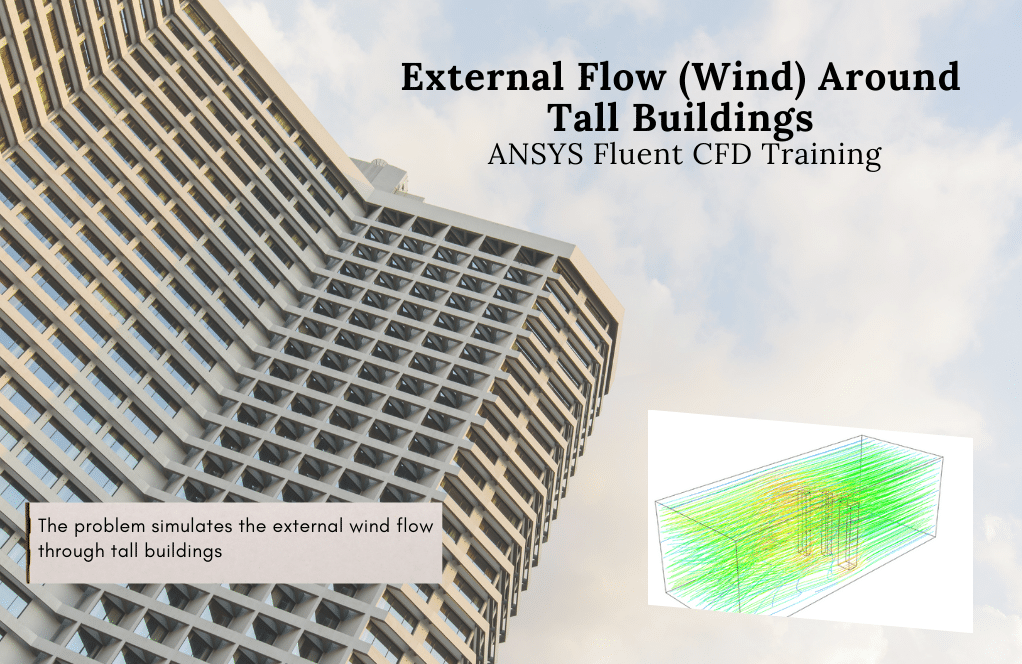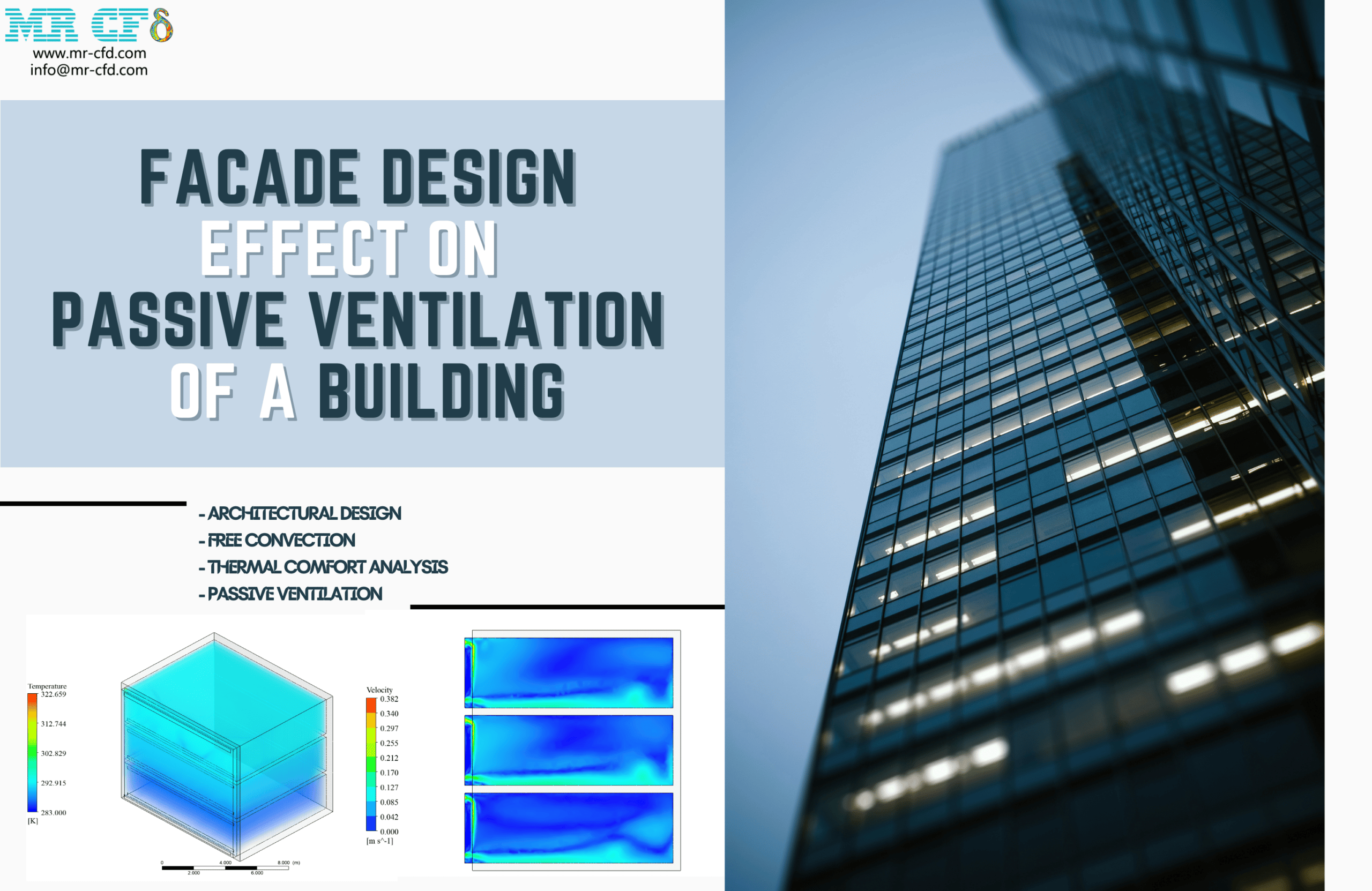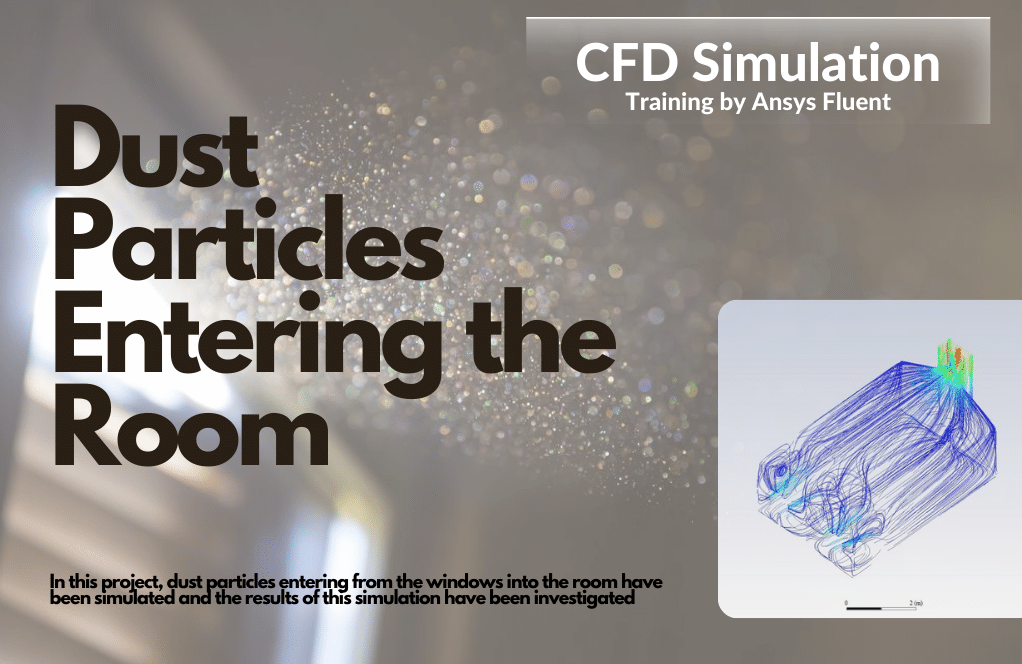External Flow Around Tall Buildings, Transient
$60.00 $30.00 Student Discount
- The problem numerically simulates the external wind flow around tall buildings using ANSYS Fluent software.
- We design the 3-D model by the Design Modeler software.
- We Mesh the model by ANSYS Meshing software, and the element number equals 128893.
- We perform this simulation as unsteady (Transient).
To Order Your Project or benefit from a CFD consultation, contact our experts via email (info@mr-cfd.com), online support tab, or WhatsApp at +44 7443 197273.
There are some Free Products to check our service quality.
If you want the training video in another language instead of English, ask it via info@mr-cfd.com after you buy the product.
Description
Description
The problem simulates the wind flow through several buildings in a specific computational domain by ANSYS Fluent software. We perform this CFD project and investigate it by CFD analysis.
These buildings are considered barriers to airflow. The flow around the obstacles in the path of wind flow, such as the flow around buildings, aircraft wings, ship’s propellers, rigs, tall structures, etc., has many engineering applications.
In the present case, the wind flow around the three buildings is considered where the airflow enters it horizontally at a speed of 5 m/s and hits the buildings. This study investigates airflow behavior around buildings after colliding with them and studies the vortex phenomena behind these buildings.
Wind Methodology
This simulation is transient, and the whole simulation process is done in one second with a 0.01 s time step size. The present simulation is unsteady in terms of time because the purpose of the problem is to examine the effect of wind flow on structures over time. The Pressure-Based solver has been performed.
The present 3-D model is drawn using the Design Modeler software. The current model consists of an extensive computational domain in a rectangular cube with dimensions of 120 m ⨯ , 300 m ⨯ , 100 m, and three tall buildings within this domain with a height of 75 m.
The model meshing has been done using ANSYS Meshing software, and the mesh type is unstructured. The element number is 128893, and the cells adjacent to the buildings are smaller and more accurate.
Wind Conclusion
At the end of the solution process, based on the contour related to pressure, the maximum pressure happens when the wind flow collides with the front sides of the buildings.
Also, from the velocity contours, it is visible that the vortex occurs on the backward faces of the buildings. Turbulence kinetic energy, pathlines, and vectors are also extracted and analyzed. All contours, pathlines, and velocity vectors are obtained in the final second of the solution process, after 1s.
Reviews
Related products
-
Sale


















Ahmad Kreiger –
Wow pretty cool!
Vaughn Kling –
Woowww! Amazing
Harvey Considine –
How does the simulation model the wind flow around the buildings?
MR CFD Support –
The simulation uses the k-epsilon turbulence model to simulate the turbulent nature of the wind flow around the buildings.
Prof. Dahlia Gulgowski –
What’s your email?
MR CFD Support –
info@mr-cfd.com
Chelsey Langworth III –
I am impressed by the detailed flow analysis around the building models. Can you share if the wind speed was chosen based on a particular standard or if it is customizable for different urban scenarios?
MR CFD Support –
In this particular simulation, a wind speed of 5 m/s was chosen to represent a specific scenario. However, the setup is highly customizable, and users can adjust the wind speed based on different urban conditions or standards to simulate a range of scenarios and assess the impact on structural designs.
Ms. Creola Crooks I –
The detail on the unsteady conditions is great but can you specify if any turbulence model was used in this simulation?
MR CFD Support –
In transient simulations of external flow around tall buildings, a turbulence model is typically employed to accurately capture the complex airflow patterns and turbulence generated by the structures. Although not mentioned explicitly in the review, in such simulations with ANSYS Fluent, standard models like the k-epsilon or k-omega models are commonly used. These models help to predict the vortex shedding and other turbulent phenomena behind the buildings.
Ernestine Jaskolski –
I was impressed by how the simulation captured the complex flow around tall buildings. The modeling of the vortex formation behind the structures was particularly insightful.
MR CFD Support –
Thank you for your kind words! We’re thrilled to hear that you found the simulation insights on vortex formation and airflow around buildings so informative. Our goal is to provide accurate and detailed CFD analyses, and we’re glad we could meet your expectations. We appreciate your positive review!
Bernadette Borer –
Hi MR-CFD, What software did you use to make the geometry?
MR CFD Support –
Hello, The present 3-D model is drawn using the Design Modeler.
Elwyn Blanda III –
amazing work
Prof. Liliana Rolfson III –
After the completion of this CFD project on tall buildings, how accurately could the vortex shedding and wind effects be predicted? Were they in a good agreement with experimental or real-world data?
MR CFD Support –
The accuracy of the CFD predictions for vortex shedding and wind effects around tall buildings depends on several factors, including the quality of the simulation setup and the validation process. In our simulation using ANSYS Fluent, we’ve endeavored to model the physics accurately and use a fine mesh around the buildings to capture these complex phenomena. To ensure accuracy, our results can be compared to experimental data or data from similar real-world scenarios if available. Validation with such external data is the key to confirming the accuracy of our predictive modeling.
Joanne Crooks –
The real-life application of studying external airflow around tall buildings immensely intrigues me. What specifically is the engineering significance of understanding vortex phenomena behind buildings? And could this simulation help in the design of more aerodynamically efficient structures?
MR CFD Support –
Understanding the vortex phenomena behind buildings is crucial for several reasons in engineering. Firstly, it helps determine the wind load on structures, which is essential for assessing building stability and safety. Secondly, it assists in the design of buildings to minimize wind-induced motions that can be uncomfortable for occupants. The simulation could indeed contribute to designing more aerodynamically efficient structures by providing data on how different shapes and configurations alter airflow, leading to designs that could mitigate adverse effects like vortex shedding.
Jalen Kemmer –
I was amazed to see the vortex formation behind the buildings. Can you explain if any specific turbulence models were used to capture complex vortex phenomena accurately in this simulation? Thanks!
MR CFD Support –
In engineering simulations of the airflow around tall structures like buildings, turbulence models play a crucial role in accurately capturing complex flow patterns and vortex phenomena. Commonly used turbulence models in such CFD analysis include the k-epsilon, the k-omega SST, and the Large Eddy Simulation (LES) models. These turbulence models allow for detailed insights into the unsteady behaviors and vortex shedding created by the wind flow around constructions, contributing to a more comprehensive understanding of structural wind loading and other aerodynamic effects. Without knowing the specific model used in this simulation, we can say that MR CFD has likely chosen an appropriate turbulence model that provides a fine balance between computational expense and the required accuracy for predicting vortices behind the buildings.
Kelly Shanahan –
Which software features help in capturing the complex airflow behavior around the tall buildings accurately in this transient simulation?
MR CFD Support –
In this transient simulation of external flow around tall buildings using ANSYS Fluent, several software features significantly contribute to capturing complex airflow behavior. The Pressure-Based solver facilitates analyzing low-speed, incompressible flow, which is typical for wind around structures. Unstructured meshing in ANSYS Meshing provides the ability to finely discretize intricate geometries like building surfaces. Dynamic Smoothing also allows for temporal refinement as the solution progresses. It’s the combination of precise geometry modeling, meticulous mesh generation, and the transient nature of the solution that enables this simulation to provide detailed insights about airflow and vortex patterns around the tall structures over time.
Rosina Wisoky –
I really enjoyed learning about wind simulation around tall structures. The course made complex phenomena graspable; it was quite fascinating to see the vortex formations behind the buildings and understanding fluid behavior via turbulence kinetic energy. Great work on presenting the information!
MR CFD Support –
Thank you for your positive feedback! We’re thrilled to know you found the course on wind flow simulation around tall buildings insightful and enjoyable. Understanding complex fluid dynamics can indeed be fascinating, and we’re glad our training provided you with clear insights into the behavior of wind around structures. Your appreciation motivates us to keep delivering high-quality educational content to our customers.
Cicero Stiedemann –
The simulations sound intriguing! Could you provide more details on how the vortex phenomenon behind the buildings was assessed, and were any specific turbulence models used to improve the accuracy of the predictions?
MR CFD Support –
For the simulation, a suitable turbulence model, like the k-epsilon or k-omega model, is generally used to capture the complex behavior of the vortex shedding behind the buildings accurately. Vortex phenomena were assessed using various post-processing tools available in ANSYS Fluent, such as turbulence kinetic energy contours, velocity vectors, and pathlines, to analyze the flow separation and vortex formation behind the buildings. These are commonly evaluated at different time steps to understand the transient evolution of the flow patterns.
Braulio Cormier –
I am really impressed with the level of detail in your simulation of the external flow around tall buildings. The accuracy with which you’ve considered the impact of wind on the structures and the vortex phenomena is commendable.
MR CFD Support –
Thank you so much for your kind words! We take pride in providing detailed and accurate simulations to help understand complex flow phenomena. We’re thrilled to hear that you appreciate the effort and analysis involved in our work.
Dr. Vicente Klocko I –
The images of the vortex behind the buildings were fascinating. Great work visualizing the airflow elements!
MR CFD Support –
Thank you for your appreciation! We’re delighted to hear that our efforts to visualize the complex airflow dynamics helped you find the simulation results both insightful and intriguing. If you need further assistance or have any more questions about our simulations, feel free to reach out.
Dr. Kurtis Brakus Sr. –
Fantastic resource for architectural engineering and urban studies! The time step detail improves confidence in the temporal resolution. Seeing the vortex formation was especially enlightening for visualizing wind impact on structures.
MR CFD Support –
Thank you for your positive feedback! We’re glad that our simulation could visually demonstrate complex aerodynamic phenomena and enhance your understanding. If you have any more questions or need further assistance, feel free to ask.